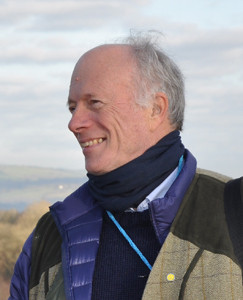Happy New Year.In my continuing search for Great Sculpture of all time (see link on the right), I had rather discounted, an American Sculptor, Frederick William MacMonnies, 1863-1937 known for such horrors as this in the Metropolitan!
But I was pleasantly surprised to discover that in Brooklyn New York there is a triumphal Arch not unlike ours at Hyde Park in London showing some serious skill, and no doubt well known to New Yorkers.

But I was pleasantly surprised to discover that in Brooklyn New York there is a triumphal Arch not unlike ours at Hyde Park in London showing some serious skill, and no doubt well known to New Yorkers.
But much better still I have found two works, clearly very similar to each other which really do warrant a place in my top 100+. “Horse Tamers”





I suppose somebody is building a website that is all bloopers…
from http://www.prospectpark.org:
Many sculptural, architectural and landscape elements have been added to the Park since Olmsted and Vaux completed their landmark design in 1868. The architectural firms McKim, Mead & White and Helmle, Huberty & Hudswell were the most prominent contributors to the Park’s post-Olmsted and Vaux landscape, but there were other artists and civic leaders whose influences are reflected throughout.
Grand Army Plaza boasts the work of world-reknowned artists John H. Duncan and Frederick MacMonnies. In 1889, Duncan, also the designer of Grant’s Tomb in Manhattan, created the Plaza and the Arch in a classical style that echoed the famous Arc de Triomphe in Paris. In 1896, MacMonnies created the three sculptural groupings that adorn the Arch: the Quadriga, Army Group and Navy Group. MacMonnies also sculpted Horse Tamers at Park Circle and Civic Virtue at Queens Borough Hall. For more information, see Grand Army Plaza History.
The Lafayette Monument at the Ninth Street/Prospect Park West entrance is another historic sculpture that anchors the Park. It honors the Marquis de Lafayette, a French soldier who assisted American forces in the Revolutionary War. Dedicated on May 10, 1917, it was designed by Daniel Chester French and sculpted by Augustus Lukeman, with a base and platform designed by architect Henry Bacon, who also brought gas lighting to the Park in his design of the Park’s original cast-iron lampposts. Although none of the fixtures survived, the design was replicated in some of the electric lampposts that were later built.
The Concert Grove, although designed by Olmsted and Vaux, contains a garden of bronze statue and busts sculpted by several prominent artists. For more information, see Concert Grove history.
Thank you Marley. I have been trying to make sense of the Great Arches around the World. Rudolph Tengers did a huge project for a grand Arch in Copenhagen called “The Arch of life” which was never built although some of the figures were used else where.
The Arch de Triomphe in Paris resembles a decorated cake. It is however very impressive especially if you try to get across the road to see it! Its position on high ground viewed from a distance and or from the Arch itself is well worth the time and effort.
Your Grand Army Arch in Prospect Park has a bronze on top too. Wickipedia has got some interesting comparisons about all these bronzes arches but to be honest the detail is a little thin. The differences in the artists’ emphasis is what intrigues me.See here http://en.wikipedia.org/wiki/Quadriga
But that is all by the way. What I was wondering is the context in which these “Horse Tamers” came into insistence. Again Wickipedia come to my rescue with others around the world, here.
http://en.wikipedia.org/wiki/Horse_Tamers
Your Horse Tamers do not feature in that article. As I think they have great merit judging from the photos I have posted, I feel they ought to be included too. It would be nice to have some detail to add!
It’s there: just not much. “MacMonnies also sculpted Horse Tamers at Park Circle and Civic Virtue at Queens Borough Hall.”
Oh, and by bloopers I was thinking of the ugly wee statuary you called a horror! What I was thinking is that it was just the thing for Chris–another blog, all of monstrosities.
Happy New Year, Robert!
Actually — I know that monument in Grand Army Plaza quite well — since I have an uncle who lives about 4 blocks away — and I have been visiting him periodically over the last 40 years.
But I don’t like it. It’s got turbulence – but I want dignity and repose.
I want Saint-Gaudens — and I don’t want McMonnies. I want a Dvorak symphony – I don’t want a ragtime piano.
I prefer the Lafayette monument – but I’ve only seen that one a few times.
Next time I go, though —- I’ll take my camera !
Happy New Year Robert. I hope you have a great year.
Those horsemen are intense
The two photos accompanying this discussion are actually reduction versions at Brookgreen Gardens near Murrels Inlet, South Carolina, and not the larger versions in Brooklyn.
According to Hispanic Society member, Beatrice Gilman Proske “Mr. Macmonnies bought two wild horses in Andalusia and had them brought to his studio in Paris. There, by means of ropes and stretchers, the horses were posed more than three hundred times in the positions in which they appear in the groups”. I have seen these powerful groups at Brookgreen. They made a powerful impression on me.
Thank you Tom, what an interesting story. Always do it from life if you can! I feel a little sorry for the horses though.